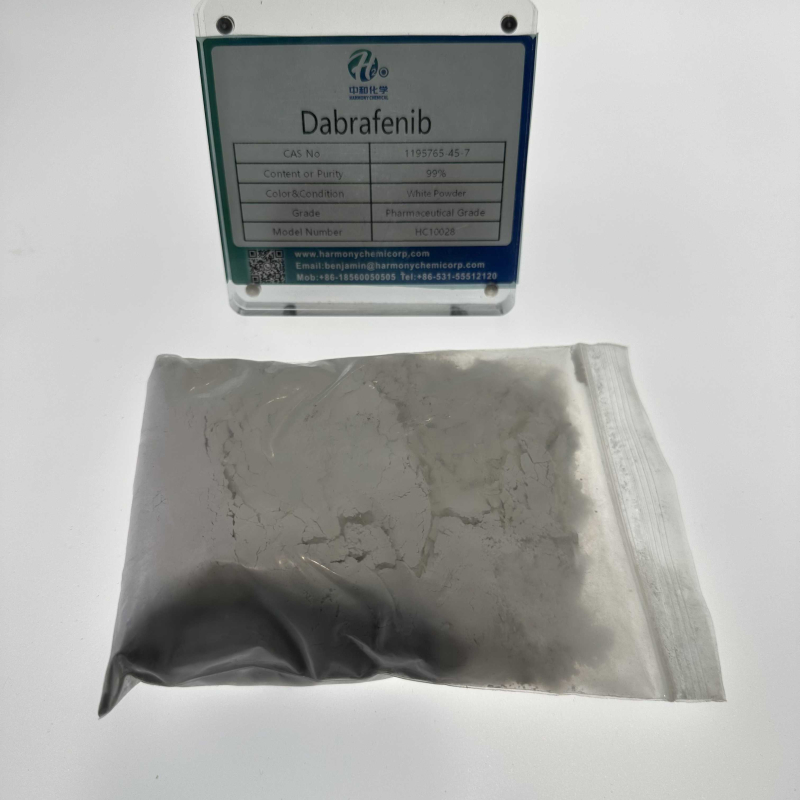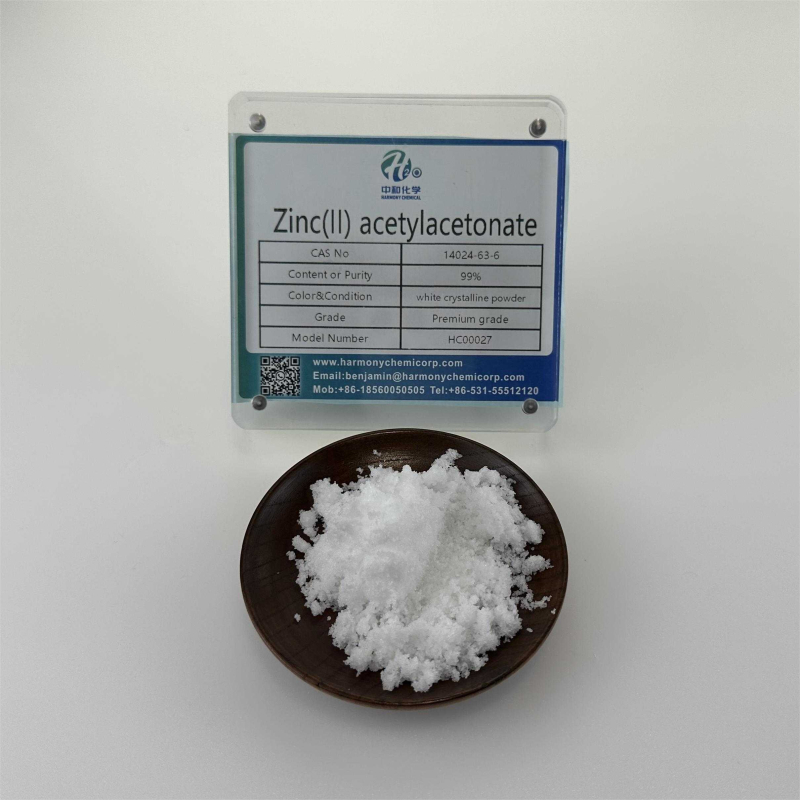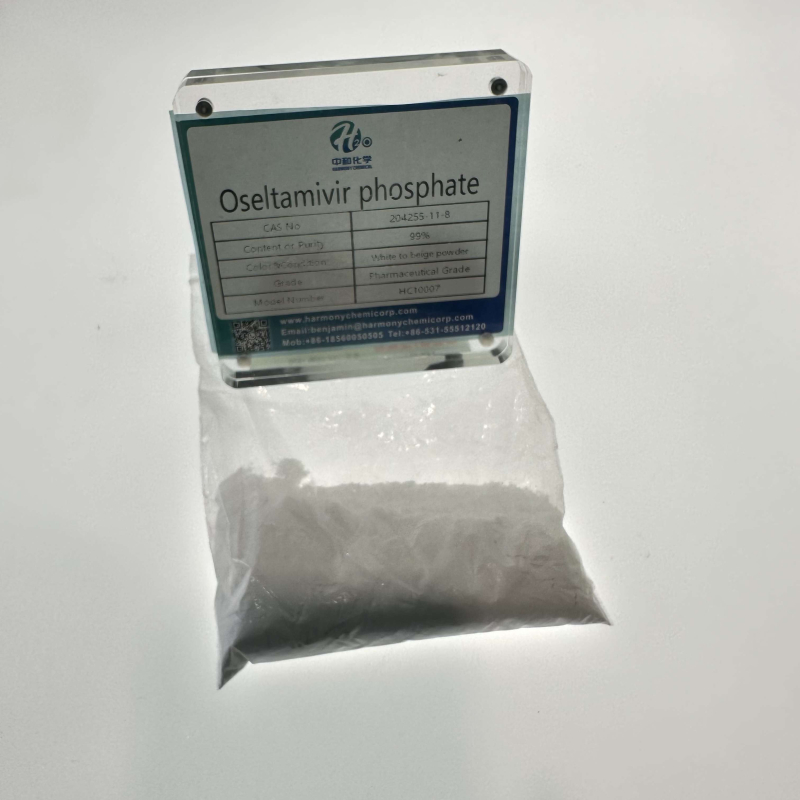nameDabrafenibCAS NO1195765-45-7Molecular formulaC23H20F3N5O2S2molecular weight519.56melting point214-216oCboiling point653.7±65.0 °C(Predicted)density1.443Storage conditions-20°CformWhite solid.colourOff-white
Contact Now
AKD wax: Currently, the manufacturing of AKD wax can be non-toxic, wastewater free, odorless, and pollution-free. Obtained country wide patents for manufacturing the usage of solvent free method. Liquid AKD wax can additionally resolve the hassle of paper slipping.
Contact Now
NameAluminum tripolyphosphateMain ingredientsaluminum tripolyphosphate and its modified substances.Anti rust geneP3O105-Aluminum tripolyphosphate is a new era of pollution-free white rust resistant pigment and an best substitute product for lead and chromium primarily based poisonous rust resistant materials. Since its launch in 1993, this product has been utilized and examined via over a hundred influential paint factories (institutes) in China.
Contact Now
Melting point>300 ° C (lit.)Storage conditionsnorestrictionsSolubility H2Osoluble25mg/mLFormPowderColor index45400ColorWhite to light creamPH value5.5-7.5 (100g/l, H2O, 20 ℃)PH cost vary of acid-base indicator discoloration5.5-7.5 (100g/l, H2O, 20 ° C)water solubilitySoluble in waterSodium dodecyl sulfonate is a broadly used anionic surfactant, which is a white or barely yellow powder with houses such as decontamination, wetting, foaming, emulsification, dispersion, coagulation, degreasing and deinking.
Contact Now
Fusing Point8.2 °CBoiling Point224-226 °C (lit.)Thickness1.056 g/mL at 25 °C (lit.)Vapor pressure<1 hPa (20 °C)Refractivity22n20/D 1.472(lit.)Flash Point220 °FStorage ConditionsStore at +5°C to +30°C.Solubilitytoluene: soluble(lit.)1,3-Dimethyl-2-neneneba imidazolinone can be used as solvent in many natural synthesis and conversion reactions; Used to learn about the formation of steady functionalized hydrogenated silane double base transition metallic complexes thru photochemistry from fragrant silanes; Dipolar solvents with p
Contact Now
Sodium p-styrene sulfonate has the following characteristics:1) Stability, polymerization resistance, and consolidation resistance all through storage;2) Thermal stability: Excellent in phrases of warmness resistance, it will now not decompose beneath 300 ℃;3) Polymerization: As a kind of sulfonic acid monomer, it has a excessive diploma of polymerization due to its inducing impact of binding to the sulfonic acid team in the para position;4) Free radical polymerization can be performed the
Contact Now
Melting point144-146 °CBoiling point353 °CDensity1,45 g/cm3Refractivity1.5555 (estimate)Flash point352-354°CStorage conditionsSealed in dry,Room TemperatureSolubilitySoluble in hot acetone.Formpowder to crystalColourWhite to Light yellowCAS90-98-2
Contact Now
1. Used for ester trade reactions.2. Use as an additive and intermediate in chemical products.3. Use: It is used to put together adhesive and as catalyst for transesterification and polymerization reaction.4. Use It is used to make adhesives between metallic and rubber, metallic and plastic, as nicely as catalyst for transesterification and polymerization, and uncooked substances for pharmaceutical industry.5. Catalysts used for esterification reactions, ester to ester conversion reactions of esters such as acrylic acid.
Contact Now
nameMETHOPRENECAS NO40596-69-8Molecular formulaC19H34O3molecular weight310.47melting point<25℃boiling pointbp0.06 135-136°density0.9261 g/cm3 (20℃)Storage conditions0-6°CsolubilityChloroform (Slightly), Methanol (Sparingly)formneat
Contact Now
Melting point: 165-185 ℃Density: 1.08g/cm3Refractive index: 1.488 (20 ℃)Water absorption rate: no longer extra than 0.4%Softening temperature: 60-65 ℃Glass transition temperature: 66-84 ℃ (varies relying on diploma of polymerization)Solubility: Soluble in most natural solvents such as alcohols/ketones/ethers/esters, insoluble in carbon hydrocarbon solvents [2]Application Editing1.
Contact Now
This product is an amide Local anesthetic. Widely used in surface anesthesia, infiltration anesthesia, conduction anesthesia, and epidural anesthesia.nameLidocaineCAS NO137-58-6Molecular formulaC14H22N2Omolecular weight234.34melting point66-69°Cflash point9℃solubilityethanol: 4 mg/mLformpowdercolourWhite to slightly yellowSOLUBLEpractically insoluble
Contact Now
Physicochemical properties: Acetylacetone zinc is a white powder with a attribute odor, secure properties, and convenient to react with oxidants. Melting factor 129-133 ℃. Easily soluble in methanol.Acetylacetone zinc can be used as an additive, inclusive of halogenated polymers, mainly polyvinyl chloride. It is the most usually used warmness stabilizer in the method of agents, and is additionally used as a catalyst.
Contact Now
nameL-ProlinamideCAS NO7531-52-4Molecular formulaC5H10N2Omelting point95-97 °Cboiling point213.66°C (rough estimate)refractivity1.4720 (estimate)Storage conditionsKeep in dark place,Inert atmosphere,Room temperaturesolubilityChloroform (Slightly), Methanol (Slightly)formPowder or GranulescolourWhite
Contact Now
nameAdmireCAS NO105827-78-9Molecular formulaC9H10ClN5O2molecular weight255.66melting point136-144°Cdensity1.542formWhite crystallineVapor pressure2×10-7Pa (20℃)
Contact Now
nameTriisobutyl phosphateCAS NO126-71-6Molecular formulaC12H27O4Pmolecular weightv266.31boiling point~205 °Cdensity0.965 g/mL at 20 °CStorage conditionsStore below +30°C.solubility0.26g/lformOilcolourColourless
Contact Now
Epidural AdministrationofRopivacainehydrochloride monohydrate effectivelyblockneuroethicpain(bothmechanicalallodyniaandheathyperalgesia)withoutinductionfanalgesictoleranceandsignificantlydelaystheevelopment ofneuropathicpain producedbyperipheral nervenjury.Ropivacainehydrochloride inhibitionpressure-inducedincreasesinfiltrationcoefficient(Kf)withoutaffectingpulmonaryarterypressure (Ppa), Pulmonary capillary pressures(Ppc),andzonalcharacteristics(ZC).Ropivacaine hydrochloride monohydrate preventspressure-induced lungedemansociatedhyperpermeability yasevidencebymaintainingPaO2,lungwet-to-dryrati
Contact Now
Due to the shortcomings of urea formaldehyde resin such as terrible preliminary viscosity, massive shrinkage, excessive brittleness, water resistance, handy aging, launch of formaldehyde, and air pollution of the surroundings and injury to fitness in the course of curing, it is integral to regulate it to enhance its overall performance and increase its application.
Contact Now
Density1.13 [at 20 ℃]Vapor pressure0.317Paat25 ℃FormViscousLiquidColorGreenWater solubilityIn soluble in waterExposure limitNIOSH: IDLH10mg/m3; TWA0.015mg/m3Nickel naphthenate is an natural compound with the chemical formulation of C22H14NiO4. It is normally used as paint drier, timber preservative, water resistant agent for fabrics, insecticide and bactericide.
Contact Now
Thermoplastic resin, hydrolyzed into polyvinyl alcohol in acid or alkaline solvents, is the main raw material for preparing polyvinyl alcohol. When molecules contain photosensitizers, they are sensitive to light and undergo decomposition reactions under the action of ultraviolet light or electron beams, exhibiting positive photosensitive resin properties. It can copolymerize with various monomers with double bonds, introducing various functional groups and possessing different properties.
Contact Now
Melting point>300 ° CDensity1.203-1.209 g/cm3FormPowderColorWhitewater solubilitySoluble in water.Merck147668Potassium silicate is a colorless or barely yellow translucent to transparent glassy substance. It has hygroscopicity. There is a robust alkaline reaction. Dissolve in acid to precipitate silica. Slowly soluble in bloodless water or nearly insoluble in water (depending on its composition), insoluble in ethanol.
Contact Now
Purpose:Shugeng Glucose Sodium is a selective Muscle relaxant, which is typically used for muscle spasticity and hypertonia.
Contact Now
CAS NO204255-11-8Molecular formulaC16H31N2O8Pmelting point196-198°CsolubilityH2O: soluble30mg/mLformpowdercolourwhite to beigeSOLUBLESoluble in water (75 mM)optical activity[α]/D -26 to -36°, c = 1 in H2OPharmacological motion Oseltamivir phosphate is the drug precursor of its Active metabolite, and its Active metabolite (Oseltamivir Carboxylate) is a selective influenza virus Neuraminidase inhibitor. Neuraminidase is a glycoprotein on the floor of viruses.
Contact Now
Melting point27 ° CBoiling point157 ° CDensity1.17g/mLat25 ° CRefractive index n20/D1.405SolubilityMethanol (Slightly, HeaChemicalbooked), Water (Slightly)FormSolidColorWhitetoOff WhiteWater solubility>=10g/100mLat20 º CThis compound is a white crystalline powder with a petroleum like odor, flammable, and prone to moisture. It can be produced by means of sulfonation of xylene and neutralization with liquid alkali. Widely used as an auxiliary agent in the manufacturing of each day washing products.
Contact Now
1. Insulating carbon black is no longer non-conductive, however its leakage cutting-edge is very small or inside the limit, which potential it can't be pure gold. Our insulation carbon black has an insulation resistance of over 1014 Ω, and beneath sure conditions, the DC micro modern-day can be decreased to beneath 10-16A.2.
Contact Now




























